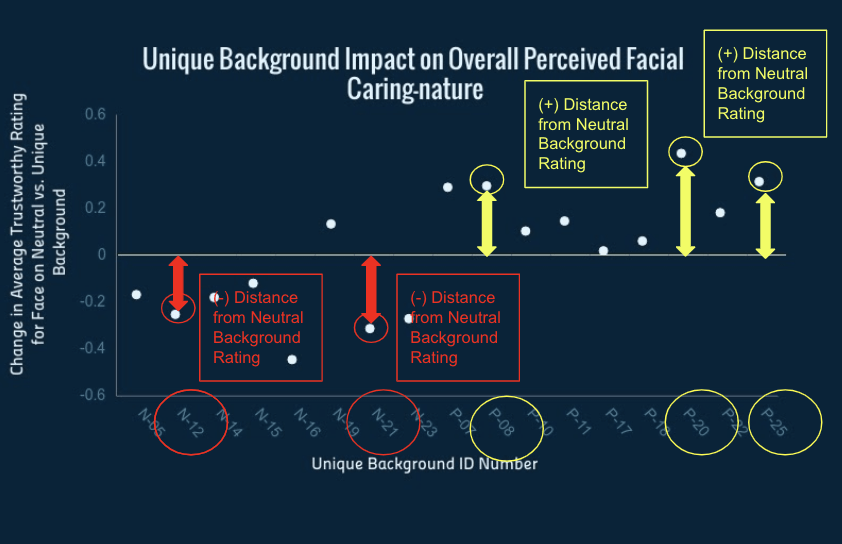
Un-“real” Background
Research Component:
Faces are an extremely important component of social interactions. We form impressions and judgments quickly after only brief visual encounters, and although these are not correlated with actual traits and characteristics, these first impressions have real consequences and can shape significant social outcomes. While much is known about the biases and the facial features that lead to these rapid impressions, few studies have explored the impact of the visual context on these snap judgments. The majority of previous studies on facial impression formation have utilized facial stimuli that are isolated from/or on monochromatic backgrounds, thereby, ignoring the role that the background context plays in facial impression formation. My study investigates how the surrounding background context can influence rapid facial impression formation. Moreover, it used a wide range of real facial photographs rated by thousands of participants for “trustworthiness” and “caringness” from the Karolinska Institute and the University of Basel facial databases. These stimuli were separated from their neutral backgrounds and photoshopped into uniform clothing and onto backgrounds selected as either positive or negative valence. I asked participants to rate these new composite images to investigate whether there were significant changes to trustworthy and caringness judgments due to the influence of the background context in which they are viewed. My results suggest that, on an individual basis, background context did influence the trustworthiness and caringness judgements of my participants. Specifically, exploratory t-test showed that there were certain negatively-valanced backgrounds that caused participants to rate the facial stimuli as less trustworthy or caring and certain positively-valanced backgrounds that did the opposite. This suggests that background context provides humans with social information that influences their overall perceptions of trustworthiness and caringness.
Visual Component:
When you join a videoconference from the only clean part of your home, do you consider that pristine-appearing background to be real or a deliberate cover-up of your life’s inherent complexities? This tension that exists between what we, modern-day humans, present to the world as our background versus what our backgrounds actually are, is what my visual component aims to address.
Thus, my piece consists of two four-foot-wide folding fans, posed as personal backdrops capable of literally covering-up any activity that might be happening behind them. One fan was covered in white ostrich plumes while the other was covered in multi-colored strains of embroidery thread. I decorated them with textural and unlikely appearing materials in order to given them an air of “un-realness.” Thus, my goal for this piece is to make the viewer look at the backdrops and confront the immediate question: Are they [the backgrounds] physically and/or conceptually real or unreal? I hope that my viewers will use this experience of deliberately confronting the “realness” of a background as a reminder to always be aware of the subconscious meaning that they might be attributing to backgrounds and, more importantly, to the humans seated in front of them.
Sector A
Advisors
Elizabeth Johnson (WHAR)
Gregory Vershbow (VLST)

 Visual Studies
Visual Studies